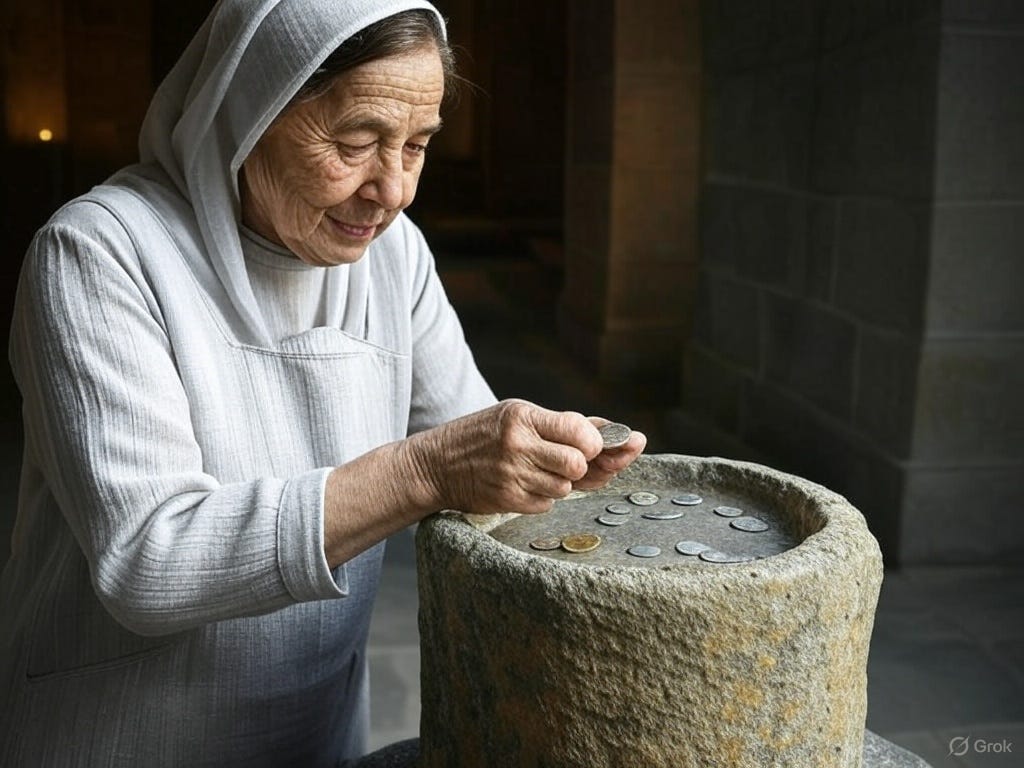This week, I am working on a book, hidden away in a house on the Eastern Shore of the Chesapeake Bay. It is cold, windy, and wet outside. It’s a perfect day to write! Today’s post is a bit short and contains a few thoughts on charitable giving.
Canadian tax authorities are proposing that churches and religious groups lose their tax-exempt status. You can read about it in this Christianity Today article, but the bottom line is that it likely won’t happen. The Liberal Party is on their way out and the Conservative Party is not so excited about this change. It got me thinking, though, about the effect that a change like this makes in a society.
I think we have a real-life case study to look at.
The US tax code has pretty much done away with the religious exemption for small donors. This is because our tax laws increased the standard deduction so much (under Trump in his first term, I believe) that most people no longer itemize. If you don’t itemize, you get no credit for the charitable deduction. Thus, Trump’s tax bill has effectively removed the benefits of a tax deduction for most donors (this is not a Trump statement - pro or con - just an observation, folks). Wealthy individuals will still get a benefit, but most of us are not wealthy individuals.
So, what has been the effect of this change?
Here are a few reference points that I found (I found these details on this page from 2020):
The Tax Cut and Jobs Act of 2017 doubled the standard deduction.
In 2017, 45.5 million people itemized and in 2018 that number dropped to around 18 million.
Giving has increased despite these changes, with a small dip in 2022 but a recovery in 2023.
Over this same time, it is fair to point out that US marginal tax rates increased, lowering overall taxation. This taxation change may have contributed to the increased giving in 2020. There is no way to know of course. It does infer that people give more when they are taxed less. Since 2020 (when the article I am citing was published), giving trends have largely been stable, with a little bit of up and down.
Here are a couple of sources you can use to see giving trends/stats:
How Tax Policy Affects Charitable Giving Literature Review and Meta-Analysis on the Tax Elasticity of Charitable Donations (this paper claims that for each dollar of tax benefit, $1.30 of giving happens!)
Despite this last research report’s conclusion, I think it is fair to conclude that the policy making the standard deduction larger has not had a significant factor in motivating people to give.
I am not sure what the impact of tax law is on major donors. I am sure it is different and I am sure that tax law matters a great deal more. Large donors contribute the majority of charitable donations in the U.S. One source stated that 12% of donors give 88% of total dollars given (Top Nonprofit Fundraising Statistics to Know: Updated 2024).
The bigger concern is the effect of inflation on overall giving. The ECFA’s webinar (The 2024 Annual State of Giving Report) shows a drop of 2.7% when adjusted for inflation. Inflation (which is rightly understood as a form of taxation) is the bigger concern for giving, not the number of people filing for tax exemptions.
My conclusion? Tax law matters but the impact of the religious tax exemption may not be as important as we might think, at least for the average donor. It probably matters more to major donors.





We should define how the giving is being done: "relational tithing", "almsgiving", "paid clergical gets his/her pound of flesh"